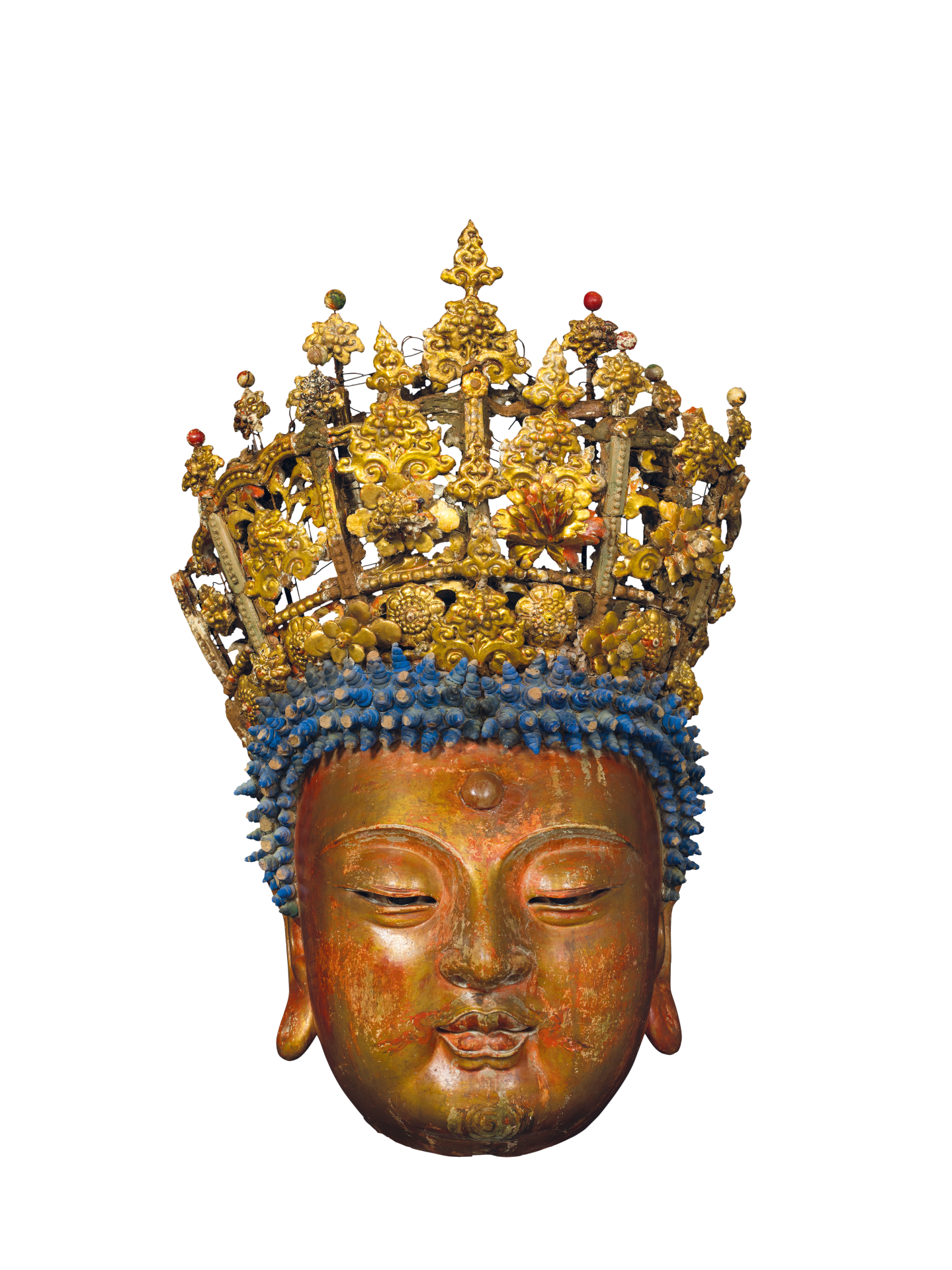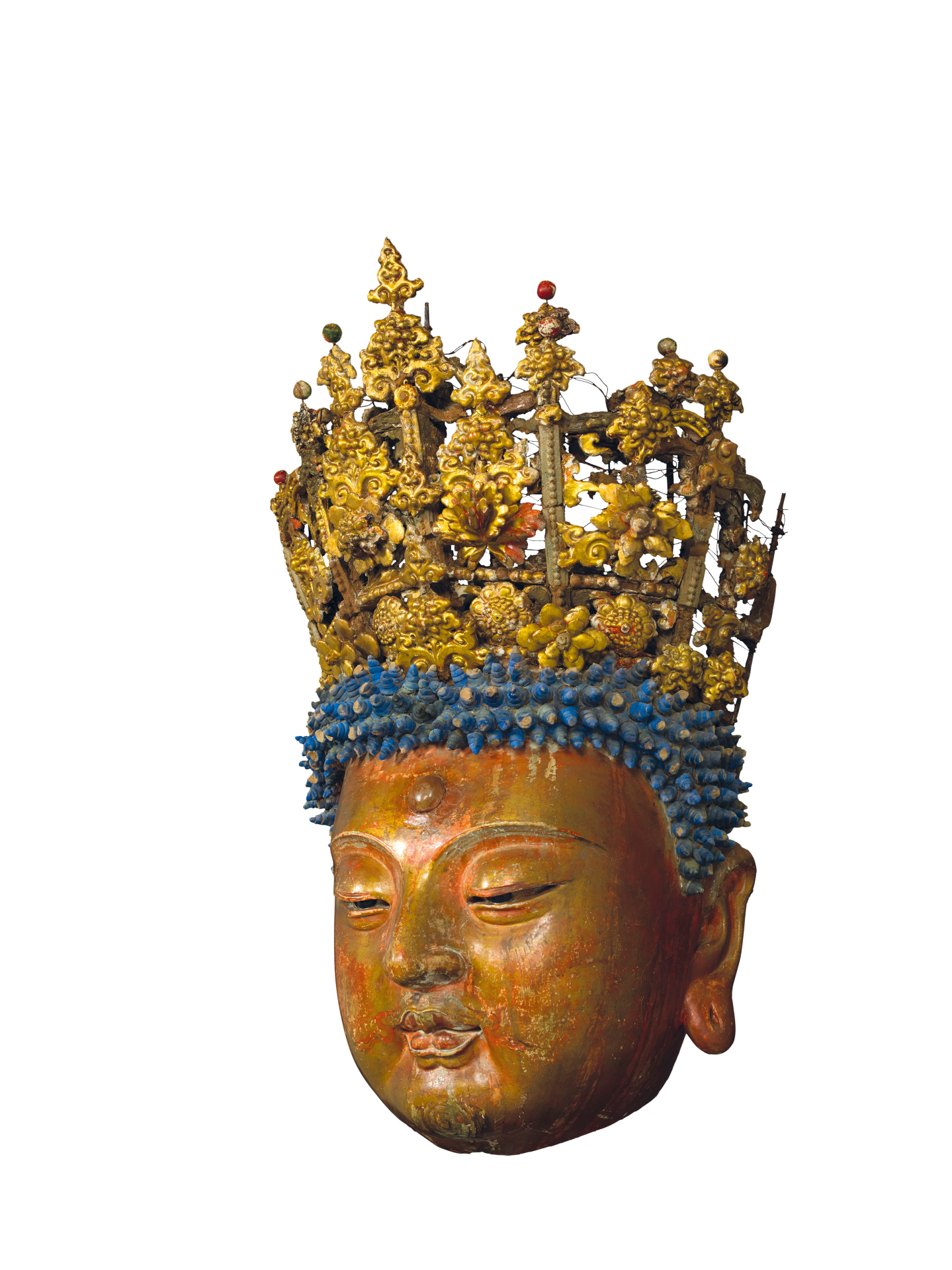Head of Buddha with Regal Crown
The biggest difference between a Buddha and a Bodhisattva is that the former wears no crown and strings of jewellery, while the latter does. However, this head with a tall crown also has tight snail-like conical curls and other characteristic features of a Buddha, indicating that the head originally belonged to a Buddha statue. Since only the head is preserved and there is no hand gesture to help identify this Buddha, the head is simply called “Head of Buddha with Regal Crown”.
This Ming dynasty (1368-1644) Buddha head is noted for its vivid expression and anatomic precision. The modelling of the facial features is particularly exquisite. The Buddha has an oblong face, elongated plump ears, fleshy cheeks, a broad forehead with an ūrṇā in the middle, downcast eyes, sharply defined eye sockets, and thick heavy eyelids with low relief edges highlighted by incised lines to emphasise the skin fold of the upper eyelid and the sagging of the lower eyelid. Glassy material is used for the pupils to give them brightness and spirit. The high straight nose has relatively wide nostrils and a rounded aquiline tip. The full soft lips are delineated with fine raised lines, and with gently lifted outer corners. The countenance is dignified and majestic looking. Facial hair are painted above the upper lip and on the chin. The moustache is parted at the middle of the philtrum and the two ends curl up like tongues of fire. The facial hair on the chin is represented by swirling lines. The tall openwork crown above the Buddha’s head is elaborately and exquisitely constructed with continuous beads, flowers and beaded floral motifs.
The Buddha’s facial features and the crown’s style share similarities with several seated Buddhas inside the Grand Hall of Guangsheng Monastery in Hongtong County, Shanxi Province. The statues were carved during the Jingtai reign (1450-1456) during the Ming dynasty. This Buddha head is believed to have been produced in Shanxi in the mid-Ming dynasty.

